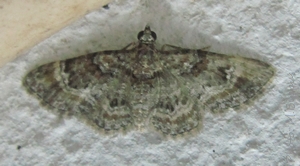
Nathaniel Mayer Victor Rothschild, 3rd Baron Rothschild, was a senior executive with Royal Dutch Shell and N M Rothschild & Sons, an advisor to the Edward Heath and Margaret Thatcher governments of the UK, as well as a member of the prominent Rothschild family.

Baron Rothschild, of Tring in the County of Hertfordshire, is a title in the Peerage of the United Kingdom. It was created in 1885 for Sir Nathan Rothschild, 2nd Baronet, a member of the Rothschild banking family. He was the first Jewish member of the House of Lords not to have previously converted to Christianity. The current holder of the title is Jacob Rothschild, 4th Baron Rothschild, who inherited the title in 1990.

Ernst Johann Otto Hartert was a German ornithologist.

Nathaniel Charles Rothschild, known as "Charles", was an English banker and entomologist and a member of the Rothschild family. He is remembered for The Rothschild List, a list he made in 1915 of 284 sites across Britain that he considered suitable for nature reserves.

Nathaniel Mayer Rothschild, 1st Baron Rothschild, Baron de Rothschild, was a British Jewish banker and politician from the wealthy international Rothschild family.

Manduca rustica, the rustic sphinx, is a moth of the family Sphingidae. The species was first described by Johan Christian Fabricius in 1775.

Gymnoscelis, the pugs, is a genus of moths in the family Geometridae described by Paul Mabille in 1868.

Menophra is a genus of moths in the family Geometridae erected by Frederic Moore in 1887.

Acosmerycoides is a monotypic moth genus in the family Sphingidae described by Rudolf Mell in 1922. Its only species, Acosmerycoides harterti or Hartert's hawkmoth, was described by Walter Rothschild in 1895.

Acosmeryx anceus is a moth of the family Sphingidae. It was described by Caspar Stoll in 1781, and it is known from India, New Guinea, and Queensland, Australia.
Gymnoscelis imparatalis, the flower-looper moth, is a moth in the family Geometridae. It is found from the Indo-Australian tropics of India, Sri Lanka, east to the Society Islands and the Marquesas Archipelago. The habitat consists of both lowland and montane ecosystems.
Chloroclystis rufofasciata is a moth in the family Geometridae. It is found in New Guinea.
Gymnoscelis acutipennis is a moth in the family Geometridae. It was described by William Warren in 1902. It is endemic to Kenya.
Gymnoscelis bryoscopa is a moth in the family Geometridae. It is found in Papua New Guinea.
Gymnoscelis concinna is a moth in the family Geometridae. It is found on various Pacific islands, including Tonga, Fiji and the Cook Islands, the Austral Islands, Easter Island, Henderson Island, Pitcairn Island and the Society Islands.
Gymnoscelis festiva is a moth in the family Geometridae. It is found on New Guinea and on Buru and Sulawesi.

Gorgonidia harterti is a moth of the family Erebidae first described by Walter Rothschild in 1910. It is found in the Brazilian state of Amazonas.
Hartert's camaroptera is a small bird in the family Cisticolidae. It is endemic to Angola.










